Between Sand and the Night Skies

'Linsey Dodaro'
Nestled against the Sangre de Cristo mountains—in the northeastern corner of the San Luis Valley—sits an expanse of otherworldly and towering sand dunes. These rich brown dunes cover 30 square miles in southern Colorado’s Great Sand Dunes National Park and Preserve. This national park, with its sandy, smooth hills, became my favorite place two years ago after my first visit. There is something striking about them—the crests wind-formed and wound into beautiful, arching lines.
It was in this picturesque and sandy landscape of southern Colorado that the 11th collaborative Night Skies Photography Workshop between National Park Trips and Tamron Lenses took place in late July. I was fortunate enough to join National Park Trips this summer as a photography intern, and even luckier that I was able to attend the Night Skies workshop in one of my favorite places in Colorado.
Worried murmurs filled the meeting room of Alamosa’s Hampton Inn on an early Monday afternoon in late July. The forecast called for rain, and the dark skies in the West were creeping closer.
“Well, to address the elephant in the room—the weather is not great. We’re hoping things clear up tonight but there’s no guarantee,” Rob Wood, the workshop organizer and (fromer) Executive Director and Publisher of National Park Trips assured the group of 20 participants and several photographers that were gathered in the meeting room. “But we’ll do our best to ensure whatever we shoot, we’re going to get great images.”
The group of us—professional and beginner photographers alike—were anxious to get to the park and begin clicking the shutter releases on our cameras. But first—a short lesson on night skies photography and how to do it right. During the first two hours of the workshop, we sat and ate dinner while we listened to the Tamron instructors, Ken Hubbard and Andre Costantini, discuss the basic settings of a camera, long-exposure photography and how to get that coveted shot of the Milky Way.
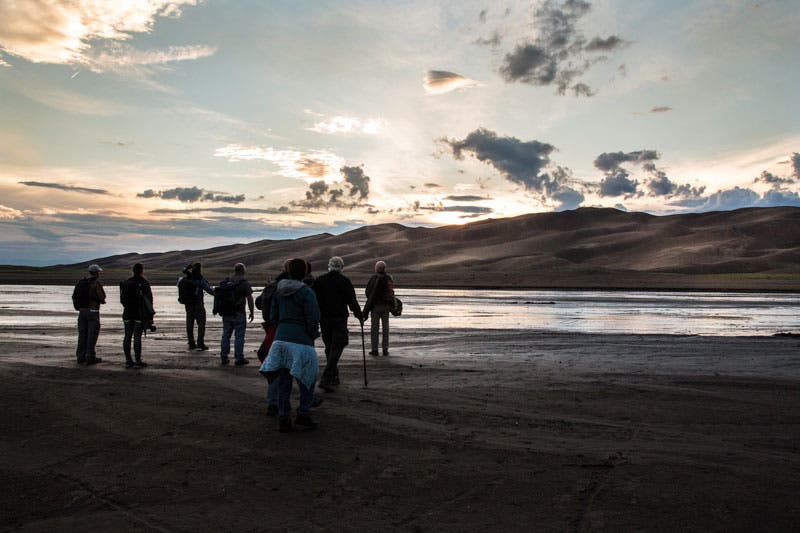
After the pre-shoot seminar, we were off to the dunes. In the two hours that had passed inside the Hampton Inn, the weather was looking better as we drove towards the park. We arrived at the first location, Medano Creek, at the base of the dunes. Normally, the sunsets in San Luis Valley are brilliantly colorful. However, on this evening we were met with cloudy, blue and white skies. While the sun set, groups of people sand-boarded and stumbled down the slopes of the dunes and through Medano Creek—creating ghostly shapes in our long-exposure shots.
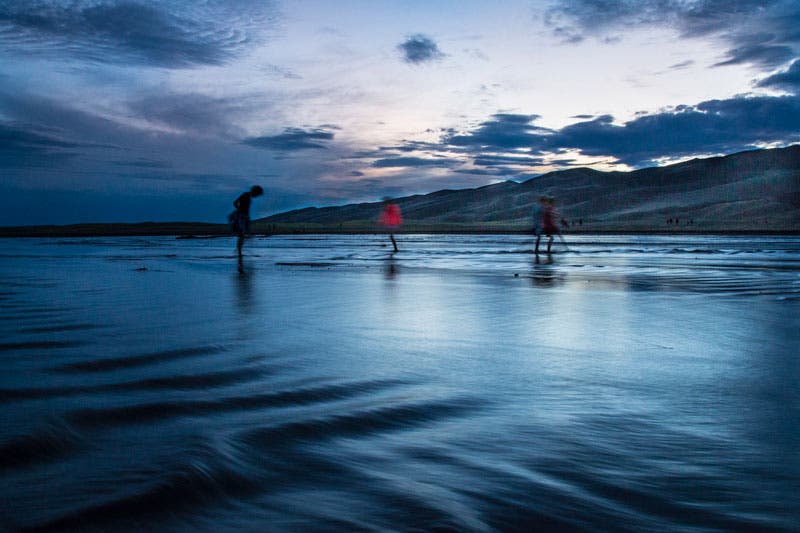
While the last light faded from the sky, the first stars came out and we pointed our lenses further upward toward the skies. With clouds still rolling through we waited at the edge of the creek, poised to head to our second location as soon as the weather cleared.
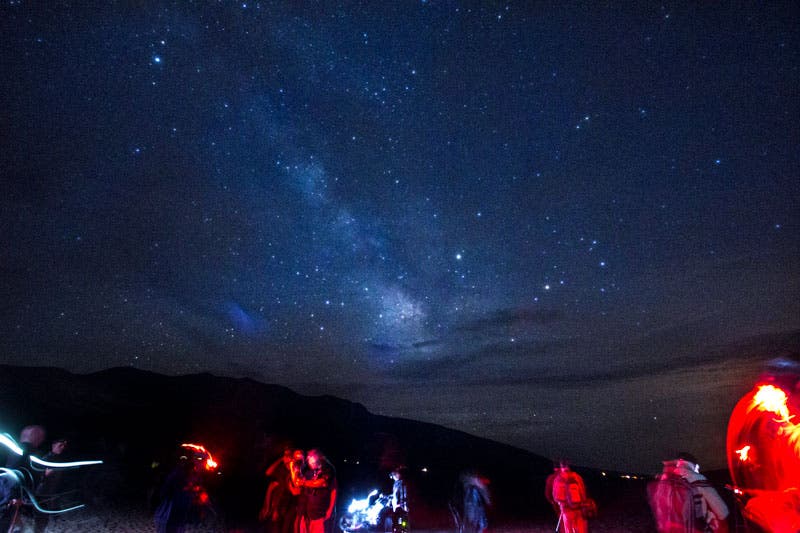

We wandered up to the dunes and shot at several different locations throughout the next couple of hours.The night grew colder, but with the cold came clear skies. As our shutters snapped away, every now and then a small gasp from a fellow participant taking a look at the photo they just shot could be heard—stars unseen becoming visible through a 30 second exposure.
We moved locations several times during the night—capturing the Milky Way and learning the basics of light painting. While instructors erratically pointed and swept their flashlights across the dunes, the group laughed and giggled because apparently not everyone’s skills pointing a flashlight are equal. Comments of “More cowbell!” would ring out through the dunes every now and then when one of the instructors didn’t hold the light long enough upon the landscape.
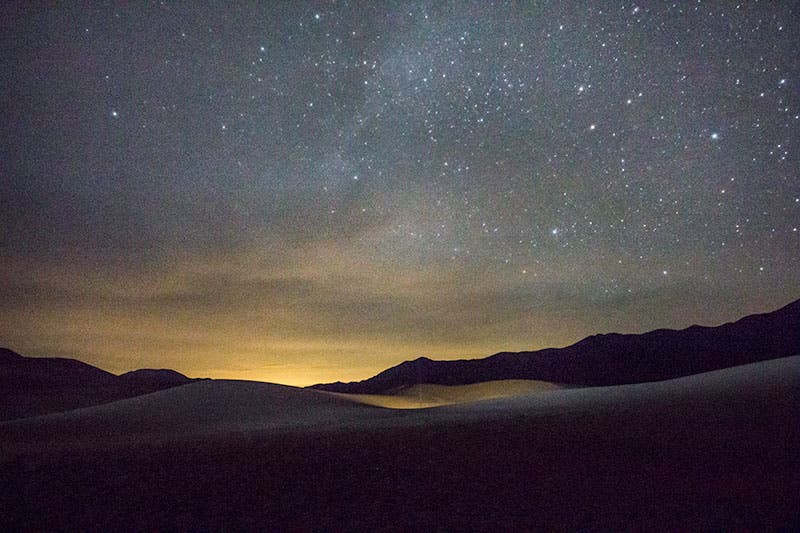
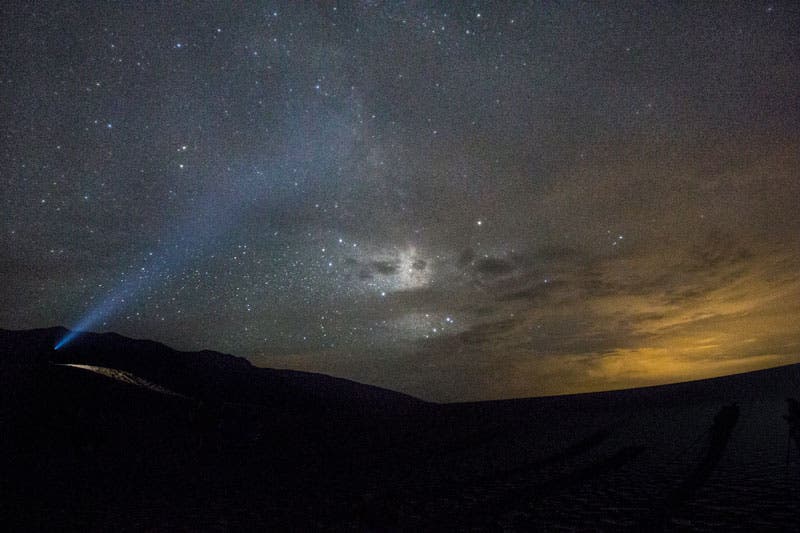
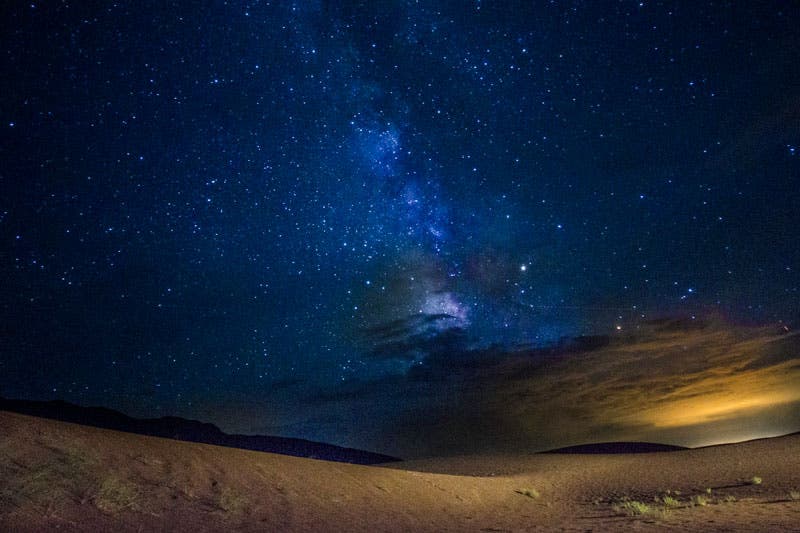
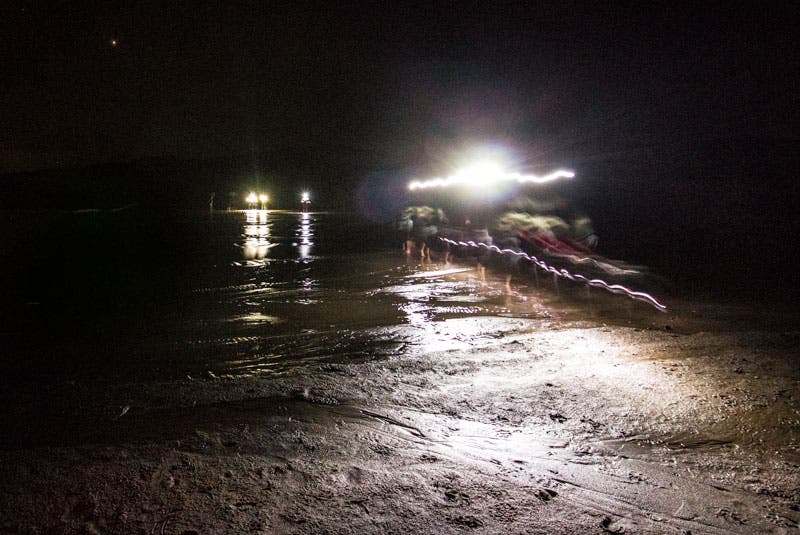
At around 1 a.m., we packed up our gear and headed down the dunes toward the parking lot. We made it back to the hotel for a quick two-hour nap and were headed back out again for the sunrise. Sleep-deprived and sleepy-eyed, we snapped photos of the sunrise over the mountains and dunes near the park’s visitor center before we again headed back to the hotel for a post-shoot seminar. Over breakfast and hot coffee we learned about post-processing editing techniques to give our photos that extra punch.

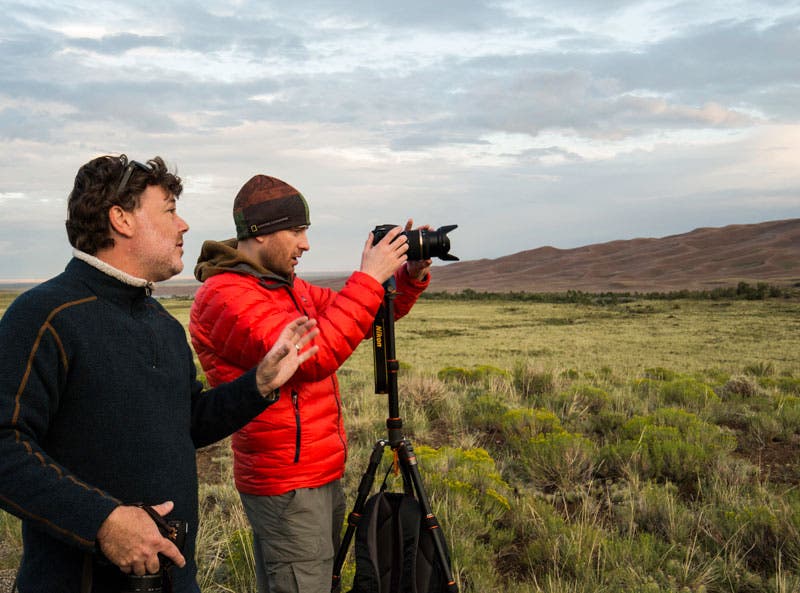
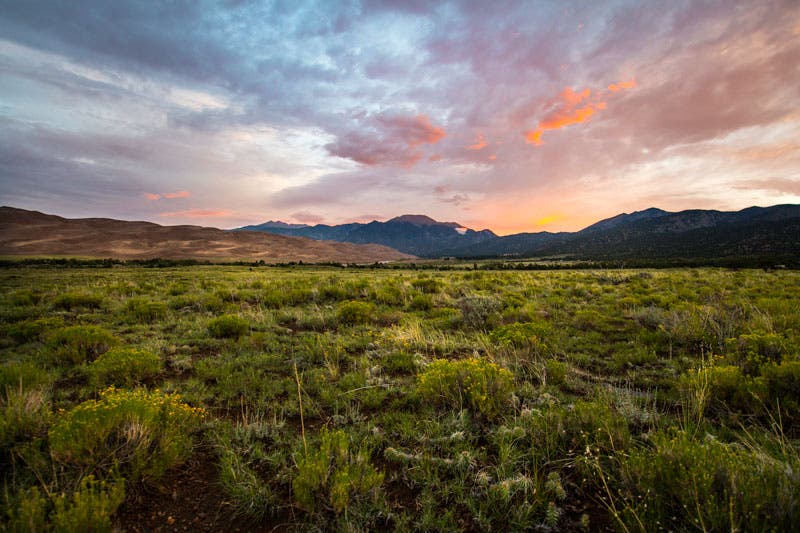
After our sunrise shoot I had a few short moments to catch up with Rob Wood, the organizer of these workshops. I was curious what his favorite part of the photography workshops is, to which he responded:
“Just being out in the park, in the middle of the night, with a bunch of like-minded people that love capturing beauty. It’s an amazing feeling to be out in a park and experiencing it at night and feeling like you’re the only one there. That’s even better than the images themselves—the feeling and the experience.”
The seminar finished—we said our goodbyes and nice-to-meet-you’s—and I promptly headed back to my hotel room to catch some more sleep before a late check out. I’m sure it was a dreamless sleep, but when I woke up and started driving back towards Denver, I thought of our night spent in the sloping valleys of sand.
During the night, the winds that normally flow strongly through the dunes were gone—and besides the snapping of shutters and clicking of buttons—all was still, quiet and calm. It was just us with our cameras, between the sandy hills and star-filled skies. The experience of being in a national park at night, just gazing up at the skies, is one truly unmatched by anything else.
Want to learn more about photographing starry night skies, the Milky Way, sunsets and sunrises? Get full access to our Night Sky Photography online course plus other in-depth fitness, nutrition, and adventure courses when you sign up for Outside+.